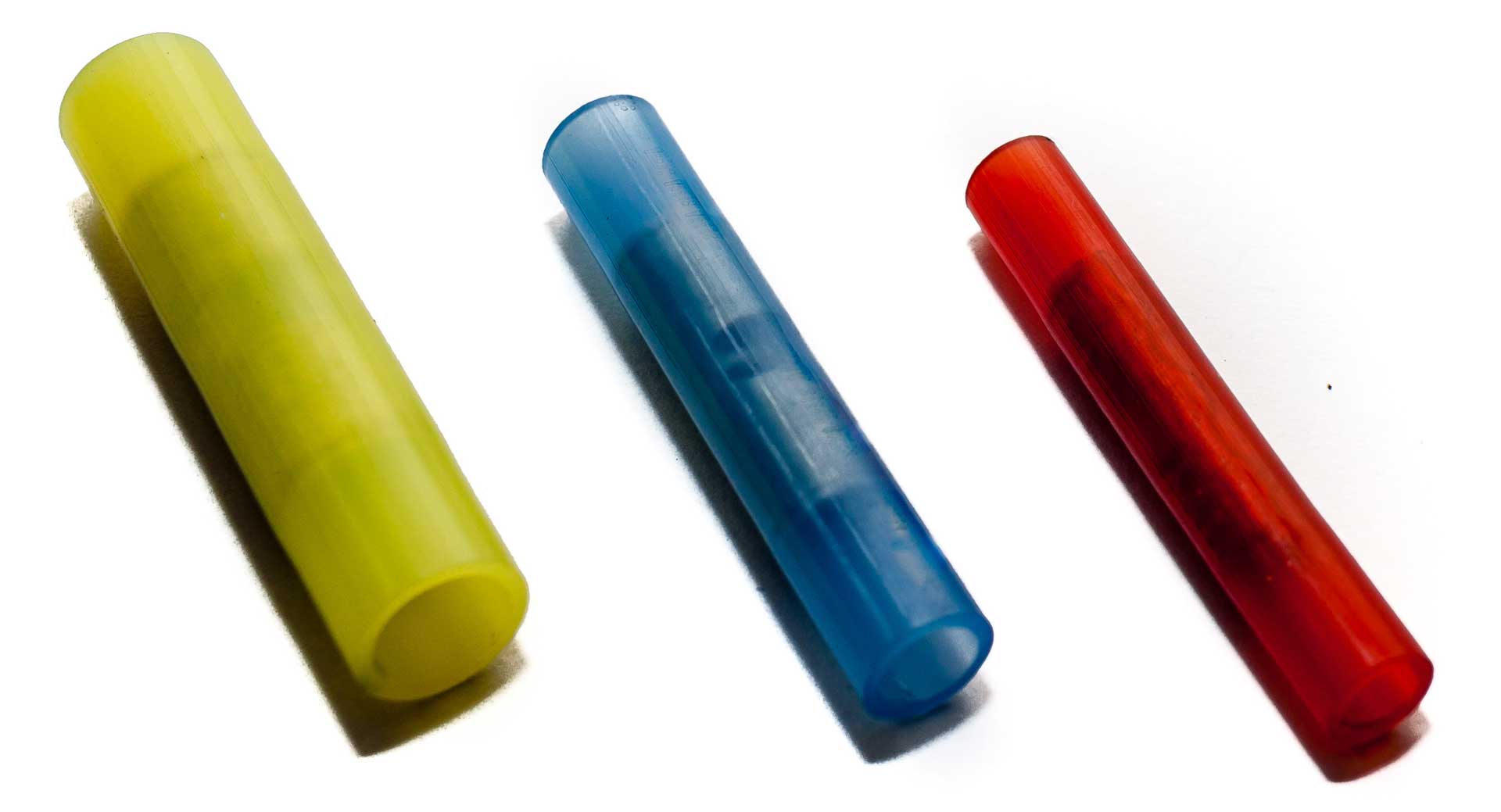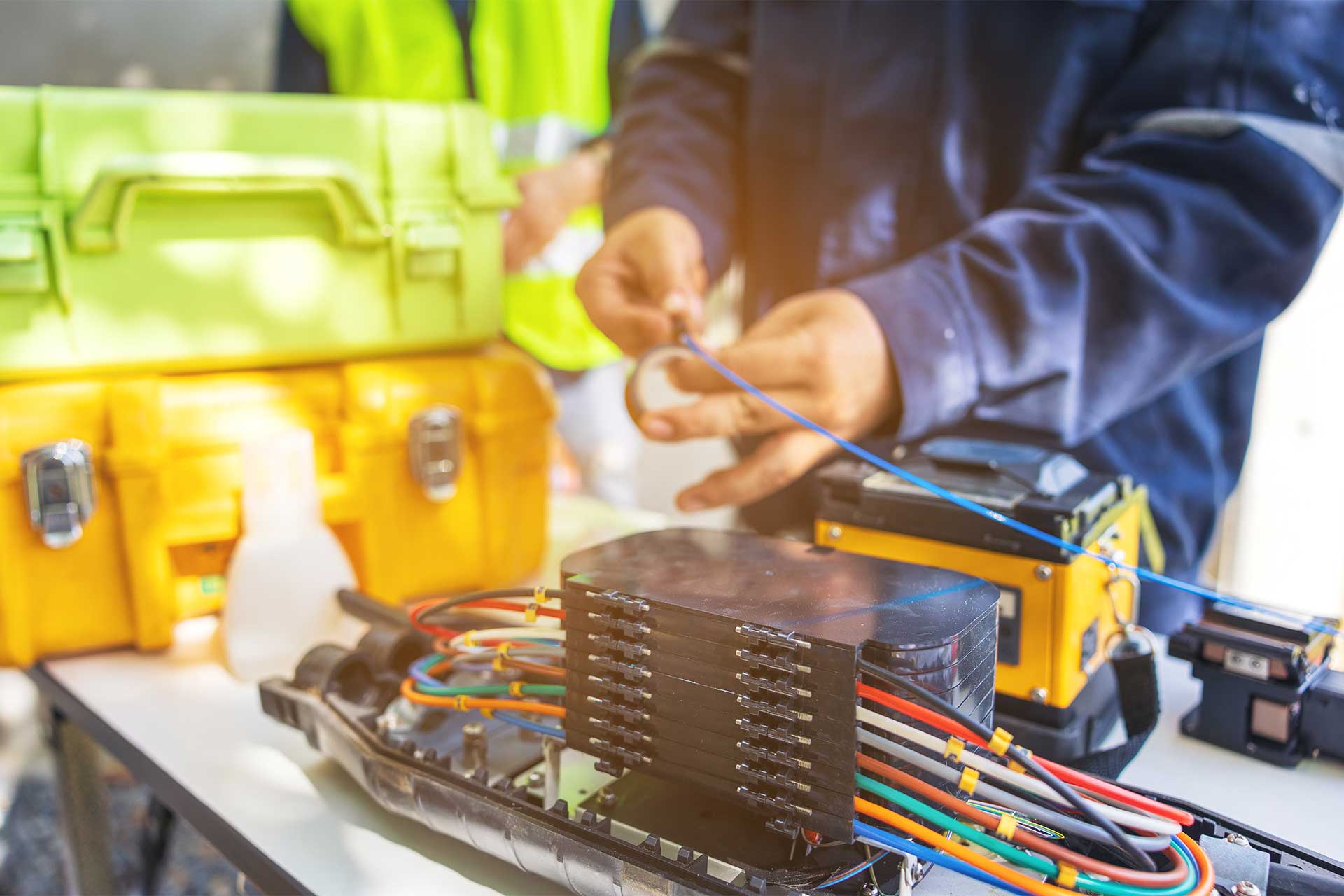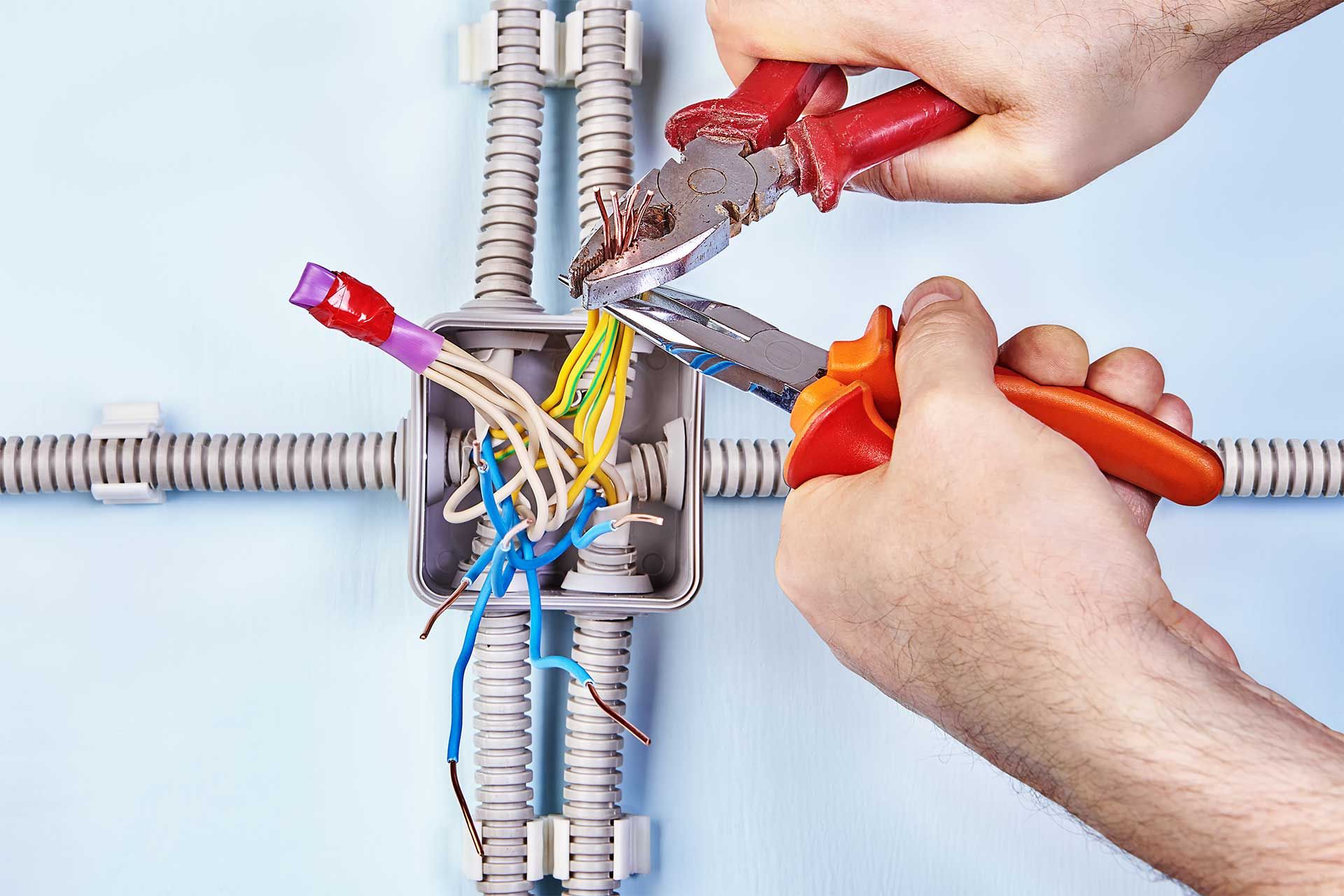We’re taking an in-depth look at wire splices, which are indispensable to efficient industrial electronic wiring. Unlike their more simplistic counterpart, wire caps, wire splices are vital for ensuring electrical connections are safe, reliable, and efficient.
Although wire splices are generally small and simple in design, they are paramount to industrial electronics applications for several reasons: securing connections between two or more wires, maintaining continuity of electrical performance, and facilitating maintenance and repairs. Today’s post will explore the various types of wire splices available, their applications in industrial electronics, how to splice wires, and Peerless Electronics’ recommended brands.
What is a Wire Splice?
In industrial settings where machinery and equipment operate under demanding conditions, a stable electrical connection is crucial to prevent interruptions in power supply, data transmission, or control signals. Wire splices are designed to facilitate stable connections by securely joining the ends of two or more wires to create a continuous electrical path in these demanding settings.
Unlike wire caps, which are primarily used for temporary or low-voltage connections, splices are made for durability and reliability across a wide range of electrical applications beyond industrial electronics, including automotive, aerospace, telecommunications, marine, renewable energy, medical devices, and consumer electronics.
Uses of Wire Splices
Wire splices ensure that wires are efficiently joined and protected against the elements, mechanical stress, and any potential electrical hazards. Wire splices are critical to various electrical installations, offering versatility across residential, commercial, and industrial applications. Although running a solid, uninterrupted cable from the service panel to the device or between devices is ideal, it’s not always possible - which is where wire splicing becomes invaluable, especially in environments that demand high voltage or require permanent, robust connections.
Splicing Wires
Splicing involves joining two or more unconnected wires to repair, extend length, or facilitate continuous connections in electrical installations. Connecting wires with dedicated splice connectors ensures a durable, mechanically stable, and electrically conductive connection. This method of connecting wires typically involves using crimping tools or soldering, followed by insulation to protect the exposed wires.
Terminating Wires
Wire termination involves ending a wire securely to prevent any electrical hazards. Splices used in termination provide a safe, insulated end to exposed wires, which protects them from short-circuiting or sparking.
Wire Organization
In complex electrical systems, organizing wires is paramount for easy maintenance and troubleshooting. Wire splices can help manage wire runs by securely joining multiple wires, which helps create neat, organized, and safe electrical systems.
Different Kinds of Wire Splices


Selecting the right wire splice is critical to ensuring electrical connections' safety, reliability, and efficiency. Several variables determine the type of wire splice needed for an industrial electronics application.
- The electrical characteristics of the application, including voltage, current, and frequency, will influence the choice of wire splice. Different types of splices have varying capabilities to handle these electrical parameters. For example, high-voltage applications may require specialized insulation and insulation materials to prevent electrical breakdown.
- The environmental conditions play a significant role in selecting the appropriate wire splice. Factors such as temperature extremes, moisture, chemical exposure, vibration, and mechanical stress can affect the performance and reliability of the splice. Splices designed for industrial environments must be able to withstand these conditions without degradation or failure.
- The installation method, whether soldering, crimping, heat-shrinking, or twisting, depends on factors such as accessibility, ease of installation, and the level of expertise available. Each installation method has its advantages and limitations, and the chosen method should align with the requirements of the application and the preferences of the installer.
- Industrial electronics applications often involve equipment and machinery subjected to mechanical stress, vibration, and movement. Wire splices must provide sufficient mechanical strength to withstand these forces without coming loose or breaking. Crimped and soldered splices are commonly chosen for their robust mechanical connections.
- Some industrial electronics applications may have limited space available for wiring and splicing. In such cases, compact and low-profile splice designs may be preferred to optimize space utilization and facilitate installation in confined areas.
- Industrial electronics applications are subject to various regulatory standards and requirements governing safety, performance, and reliability. Wire splices used in these applications must comply with relevant industry standards and certifications to ensure that they meet the necessary quality and safety criteria.
- Industrial equipment is often expected to operate reliably for extended periods without frequent maintenance or replacement. The chosen wire splice should exhibit long-term durability and reliability to minimize the risk of premature failure and downtime, thereby contributing to the overall reliability of the system.
Now, here's a look at the various types of wire splices commonly used in industrial electronics applications:
Crimp Connectors
Crimp connectors are widely used for creating secure, durable connections. They require a crimping tool to fasten the wires, creating a reliable mechanical and electrical bond between them.
Solder Sleeves
Solder sleeves are a type of splice connector that provides a strong, permanent connection. They combine heat shrink tubing with a solder ring, which melts to join the wires when heat is applied, ensuring optimal conductivity and insulation.
Push-In Connectors
For quick, tool-free connections, push-in connectors are an efficient choice. Wires are simply inserted into these connectors for a firm grip. However, they are best suited for low-voltage applications and where space is constrained.
Waterproof Splices
In environments exposed to moisture or direct water contact, waterproof splices are essential. These splices are designed with moisture-resistant materials and sealants, ensuring that the connection remains dry and secure.
How to Splice Wires
Splicing wires is a fundamental skill in electrical work, allowing you to extend, repair, or branch electrical circuits. Here's a comprehensive guide to help you splice wires safely and effectively.
Step 1: Choose the Right Wire Splice Connector
Before you start, select the appropriate wire splice connector for your project based on wire size, type, and suitability to the operating conditions (e.g., indoor, outdoor, and wet areas). The selection variables described earlier can also help determine which splice type is appropriate for the application.
Step 2: Turn Off the Power
Safety first! Always turn off the power at the circuit breaker or fuse box to prevent electrical shock. Use a voltage tester to ensure the wires are not live before proceeding.
Step 3: Prepare the Wires
Strip approximately ½ inch to 1 inch of insulation from the ends of the wires you plan to splice. Use a wire stripper to ensure a clean cut without damaging the wire strands.
Step 4: Align the Wires
Hold the stripped wire ends together so that they are parallel and aligned. Ensure the bare wire ends are even and make a straight connection.
Step 5: Twist the Wires (for twist-on connectors)
If using twist-on wire connectors (wire nuts), twist the bare ends of the wires together using pliers to form a tight, secure connection. The twisted portion should be even and without fraying strands.
Step 6: Apply the Wire Splice Connector
Once the wires are ready to connect, apply the splice according to the manufacturer's instructions. As noted above in the types of wire splices section, the application will vary depending on the type of splice selected.
Step 7: Insulate and Protect the Splice
Ensure the splice is well insulated and protected. If using a connector that doesn't provide insulation, apply electrical tape or heat shrink tubing over the connection to prevent exposure and protect against short circuits.
Step 8: Test the Connection
Once the power is safely restored, test the connection to ensure it's working correctly. Use a multimeter to check for continuity and proper voltage, ensuring the splice has been made successfully.
Tips to Successfully Splice the Wires
- Always use connectors and tools that are appropriate for the wire gauge and type.
- Maintain a clean, organized workspace to avoid mistakes.
- Never work on live circuits. Always verify the power is off before starting.
- Follow local codes and standards for electrical work to ensure safety and compliance.
Industry Applications


Wire splices find applications across many industries, underscoring their versatility and importance in ensuring operational safety and efficiency.
Construction
In the construction industry, wire splices are used for securely wiring buildings, homes, and industrial facilities, ensuring that electrical installations meet safety standards.
Automotive
The automotive sector relies on wire splices for assembling and maintaining electrical systems within vehicles, from wiring harnesses to lighting systems.
Manufacturing
Wire splices are integral to connecting electrical components, machinery, and equipment in manufacturing to ensure smooth operations.
Telecommunications
In telecommunications, wire splices are crucial for establishing reliable connections in networks, ensuring that data and communication lines are uninterrupted.
Brands Carried by Peerless Electronics
Peerless Electronics, a full-service, authorized stocking distributor for industrial electronics, offers a wide selection of wire splices from top manufacturers. Our range ensures that every electrical connection, regardless of its application, is safe and reliable. Our broad selection includes splices by these leading manufacturers and more:
TE Connectivity (AMP / Raychem / Entrelec): For over 75 years, TE has partnered with customers and their distributors to produce highly engineered connectivity and sensing products that make a connected world possible.
Burndy: With over 95 years of dedicated customer support in both service and product, Burndy offers a wide range of tooling for all your connector needs and an electrical connector to meet every one of your power needs.
Wire splices might be less visible components within electrical systems, but their role is undeniably critical. For professionals in the industrial electronics field, Peerless Electronics provides a comprehensive selection of wire splices, backed by our exceptional value-added services and support, to cater to any electrical connection need.
Conveniently shop wire splices online at Peerless Electronics today,or contact us with questions.
Frequently Asked Questions
What are wire splices, and why are they important?
Wire splices are devices that join two or more electrical wires together, ensuring a continuous electrical path. They are essential for creating durable, reliable, and safe electrical connections in various applications, from residential wiring to industrial electronics.
How do I choose the right type of wire splice for my project?
Choosing the right wire splice depends on several factors, including the voltage level, the environment (indoor or outdoor, dry or wet), and the mechanical stresses the connection will face. Consider the specific requirements of your project, such as the need for waterproofing or the wire gauge, to select the most appropriate splice.
Can wire splices be used for both temporary and permanent connections?
Yes, wire splices can be used for both temporary and permanent connections, depending on the type. Some splices are designed for quick, temporary fixes or for applications where changes might be needed, while others are made for long-lasting, permanent installations.
Are there waterproof wire splices available for outdoor applications?
Yes, waterproof wire splices are specifically designed for outdoor or wet environments. These splices typically include moisture-resistant materials and sealants to protect the connection from water ingress, ensuring durability and safety in harsh conditions.
Can I use wire splices in high-voltage applications?
Certain wire splices are designed to withstand high-voltage applications. It's important to check the specifications of the splice to ensure it meets the requirements for high-voltage use. Always follow industry standards and safety guidelines when working with high-voltage connections.
How do I install a wire splice?
The installation process for a wire splice varies depending on the type. Generally, it involves stripping the insulation from the wire ends, inserting the wires into the splice connector, and securing them using the appropriate method (e.g., crimping, soldering). Always follow the manufacturer's instructions for best results.
Are wire splices reusable?
Some wire splices are designed to be reusable, allowing for easy modifications or repairs. However, many splices, especially those used for permanent connections, are not meant to be reused once installed. Check the product specifications for information on reusability.
How can I ensure a secure and safe connection when using wire splices?
To ensure a secure and safe connection, always select the appropriate splice for your application, follow the manufacturer's installation instructions carefully, and use the correct tools. It's also important to inspect the connection periodically for signs of wear, corrosion, or damage.
Does Peerless Electronics offer custom wire splice solutions?
Yes, Peerless Electronics offers custom wire splice solutions to meet specific needs. Whether you require unique specifications or bulk quantities, our team can assist in providing the right solution for your project.
How can I order wire splices from Peerless Electronics?
You can order wire splices from Peerless Electronics by visiting our website, www.peerlesselectronics.com, or by contacting our sales team directly. We offer a wide range of wire splices suited to various applications, backed by expert advice and support.


















